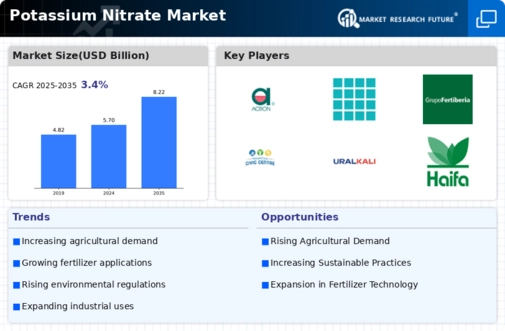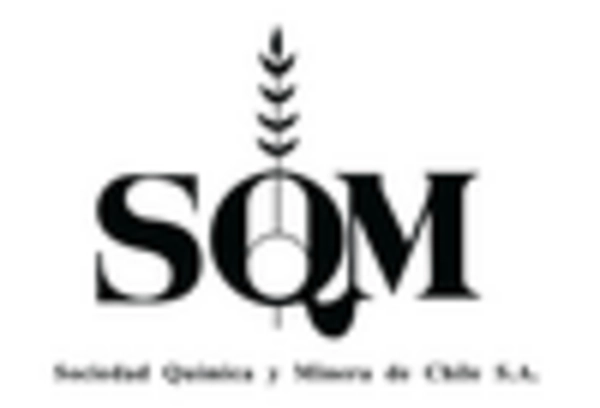Rising Demand for Fertilizers
The Potassium Nitrate Market is experiencing a notable increase in demand for fertilizers, driven by the need for enhanced agricultural productivity. As the global population continues to grow, the pressure on food production intensifies, leading to a greater reliance on fertilizers that improve crop yields. Potassium nitrate, known for its high solubility and nutrient content, is particularly favored in various agricultural applications. Recent data indicates that the fertilizer segment accounts for a substantial portion of the potassium nitrate market, with projections suggesting a compound annual growth rate of approximately 5% over the next few years. This trend underscores the critical role of potassium nitrate in meeting the nutritional needs of crops, thereby supporting the overall agricultural sector.
Growing Awareness of Nutrient Management
The Potassium Nitrate Market is experiencing a surge in awareness regarding the importance of nutrient management in agriculture. Farmers are increasingly recognizing the role of potassium nitrate in enhancing soil fertility and crop health. Educational initiatives and extension services are promoting best practices in nutrient application, leading to a more informed agricultural community. This heightened awareness is translating into increased adoption of potassium nitrate as a preferred fertilizer choice. Market data suggests that regions with strong agricultural education programs are witnessing faster growth in potassium nitrate usage. As farmers become more knowledgeable about nutrient management, the demand for potassium nitrate is expected to rise, further solidifying its position in the market.
Expansion of Horticulture and Specialty Crops
The Potassium Nitrate Market is benefiting from the expansion of horticulture and specialty crops, which require specific nutrient management for optimal growth. As consumer preferences shift towards organic and high-quality produce, the demand for potassium nitrate is expected to rise. This fertilizer is particularly effective in the cultivation of fruits, vegetables, and ornamental plants, where nutrient precision is crucial. Recent statistics indicate that the horticulture segment is projected to grow at a rate of 6% annually, further propelling the potassium nitrate market. The increasing focus on high-value crops and the need for efficient nutrient delivery systems are likely to enhance the market's growth prospects in the coming years.
Technological Innovations in Fertilizer Application
The Potassium Nitrate Market is witnessing advancements in fertilizer application technologies, which are enhancing the efficiency and effectiveness of nutrient delivery. Innovations such as precision agriculture and smart farming techniques are enabling farmers to apply potassium nitrate more accurately, thereby optimizing its benefits. These technologies not only improve crop yields but also reduce wastage and environmental impact. The integration of data analytics and IoT in agriculture is expected to drive the adoption of potassium nitrate, as farmers seek to maximize productivity while minimizing costs. The market is likely to see a surge in demand for potassium nitrate as these technologies become more prevalent, indicating a promising future for the industry.
Environmental Regulations Favoring Sustainable Inputs
The Potassium Nitrate Market is increasingly influenced by stringent environmental regulations that promote the use of sustainable agricultural inputs. Governments and regulatory bodies are advocating for practices that minimize environmental impact, which has led to a shift towards fertilizers that are less harmful to ecosystems. Potassium nitrate, being a naturally occurring mineral, aligns well with these sustainability goals. The market is witnessing a growing preference for potassium nitrate over synthetic alternatives, as it is perceived to be more environmentally friendly. This shift is expected to bolster the market, as farmers seek to comply with regulations while maintaining crop productivity. The emphasis on sustainable practices is likely to drive innovation and investment in the potassium nitrate sector.


















Leave a Comment